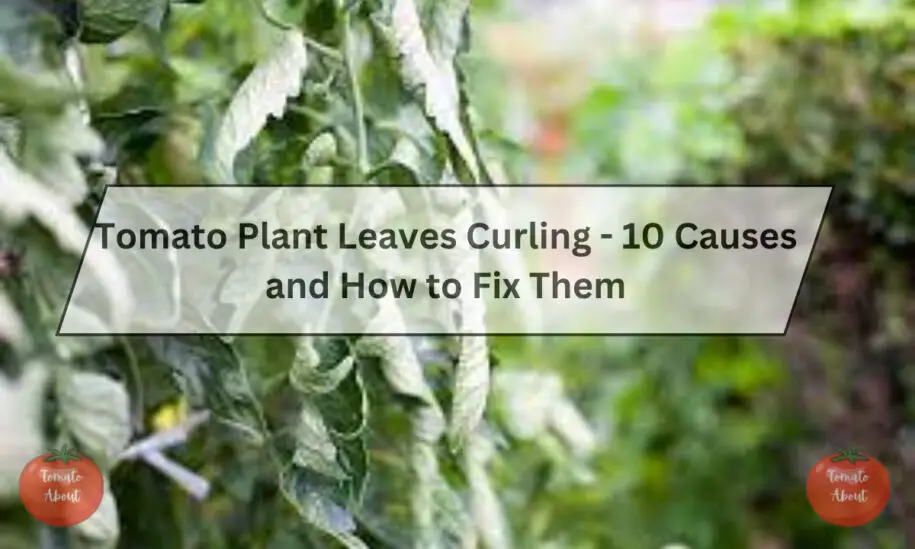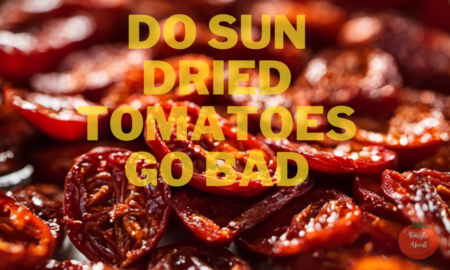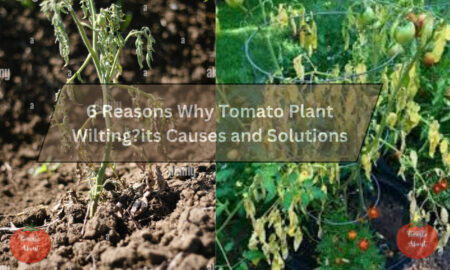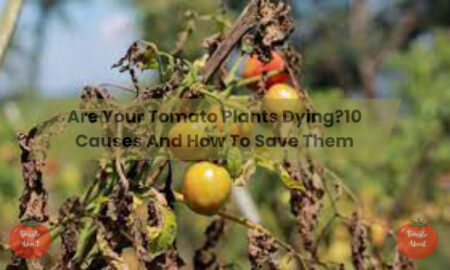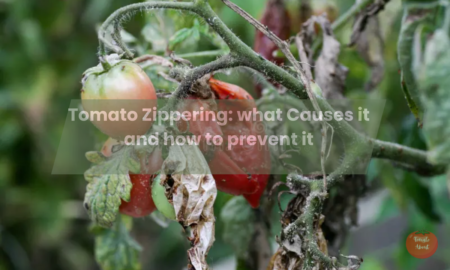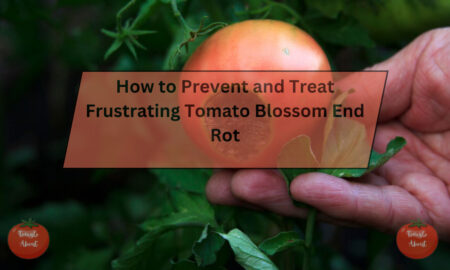As a tomato gardener, noticing your plants’ leaves curling up can cause alarm bells to go off. Curled leaves often indicate that something is wrong and your plant is stressed. However, never fear – this issue can often be fixed with a few simple adjustments to your care regimen.
In this detailed guide, we will explore the 10 most common reasons for tomato leaf curl and how you can get your plants back to optimal health.
What Exactly is Tomato Leaf Curl?
Before jumping into causes and fixes, let’s make sure we’re all on the same page regarding what tomato leaf curl is.
Tomato leaf curl refers to the upward rolling or cupping of the leaves on the plant. The edges of the leaf will turn up, causing the leaf to form a curled shape. It typically affects the younger leaves towards the top of the plant or at the ends of branches.
Often the leaves will curl lengthwise to form a narrow, canoe-like shape. Other times the sides will curl upwards resulting in a cupped appearance. Either way, the leaf is no longer flat as it should be.
In mild cases, only the very tips may turn up and the rest of the leaf will remain flat. But in more severe curling, the entire leaf will contort.
This is different than simple tomato leaf wilting, where leaves droop down limply when dehydrated. With curling, the leaves remain rigidly arched upwards.
Leaf curl can range from minor to severe. Mild curling of a few leaves generally isn’t harmful. However extensive curling can impact photosynthesis, energy production, growth, and fruit yield.
When trying to diagnose the cause, pay attention to whether it is mostly young or old leaves curling, and if patterns emerge on which side of the plant is most affected.
Now that you know exactly what tomato leaf curl looks like, let’s explore why it happens and how to fix it.
10 Most Common Causes of Tomato Leaf Curl
Through extensive research and troubleshooting tomato leaf curl for years in my own garden, I’ve narrowed down these 10 reasons as the most likely triggers:
1. Exposure to Intense Heat
Without a doubt, the #1 most common cause of tomato leaf curl is exposure to intense heat and sunlight.
Tomatoes thrive in warm summer weather, but extreme heat can stress plants. When temperatures soar above 85°F, the leaf cell walls begin to lose their structural integrity.
As a defense mechanism, the tomato plant will curl its leaves to reduce the surface area exposed to the intense afternoon sun and heat. Curling the leaf helps limit water loss through transpiration.
This type of heat-induced tomato leaf curl is a physiological response known as leaf roll. The curling actually permanently changes the shape of the plant’s leaves. Once curled from heat, the existing leaves will not unfurl or flatten out.
If your tomato plants are wilting and curling during a heat wave or under consistently hot mid-day sun, heat stress is almost certainly the culprit.
Solutions:
- Provide shade from intense afternoon sun using shade cloths, beach umbrellas, or adjacent structures. Filtered light is still beneficial.
- Ensure plants have adequate, consistent watering during hot spells. Soil should never completely dry out.
- Consider misting plants with water to temporarily reduce leaf temperatures.
- Paint terra cotta or metal containers in light colors to prevent absorption of heat.
As long as the leaf curl is confined to just the top few leaves and the rest of the plant appears vigorous, your tomato should recover just fine from a temporary heat-induced leaf roll. Just help it power through the dog days of summer.
2. Low Humidity Environments
While dry heat is the primary culprit behind leaf curling, low atmospheric moisture can also cause leaves to roll.
When relative humidity drops below 45%, tomato plant leaves will often curl upwards. This typically happens during hot and windy weather when moisture is being wicked away at a rapid pace.
Similar to heat stress, the plants respond by curling their leaves to conserve water when transpiration rates increase.
You may notice leaf curling on dry, windy days even when temperatures are not extreme. The combination of heat, wind, and low humidity causes the same moisture deprivation issues.
Solutions:
- Use drip irrigation instead of overhead watering to keep moisture locked into the soil. Avoid getting water on the leaves.
- Apply 2-3 inches of organic mulch around the base of the plants to prevent evaporation from the soil.
- Mist plants during periods of intense heat or wind to temporarily increase humidity.
- Use row covers or greenhouses to trap humidity near the plants.
Managing the surrounding humidity and soil moisture is key to preventing dry air from damaging plants.
3. Root Bound Container Plants
Here’s a common scenario that leads to tomato leaf curl – eager gardeners start seedlings early while indoors or in a greenhouse.
The baby tomato plants quickly outgrow their small seedling trays. But the weather has not yet warmed enough to transplant them outside to their final location.
These rootbound tomato plants left cramped in small containers are very prone to leaf curling and other stress signs. The tangled, crowded root system is constricted and cannot properly take up moisture and nutrients.
As the plant struggles to direct energy to starved roots, the leaves respond by curling and turning yellow from the inside out.
Unfortunately, the damage is often done by the time gardeners realize the plants are pot-bound. Avoiding this scenario comes down to proper planning and timing.
Solutions:
- Transplant root-bound tomatoes into larger containers so roots have room to spread out and grow. 5-7 gallon pots are sufficient for full-sized plants.
- If weather permits, transplant directly into the garden bed so roots have unlimited space.
- Use large enough containers from the start when growing seedlings. Upgrade gradually as the plant grows.
- Resist the urge to start seeds too early while indoors! Adhere to your last expected frost date and grow timeline.
If diagnosed early, resolving root-bound stress and moving the tomato to larger digs can put the plant back on track. However significant leaf curling indicates the damage may already be done.
4. Pest Infestations
Tiny sap-sucking pests like aphids, thrips, and whiteflies can wreak havoc on tomato plants. One prominent sign of their damage is tightly curled leaves.
Foliage-feeding insects extract vital fluids from the plant tissues. This leads to a loss of pressure in plant cells, causing them to constrict and curl leaves.
Often these minuscule pests go unseen until populations explode, causing visible plant distress. I recommend scanning the undersides of leaves thoroughly at least every other day to spot them early.
Pay particularly close attention to veins and along new growth. These are the juiciest spots that pests love to attack.
Solutions:
- Knock aphids off plants with a strong spray from the hose. Insecticidal soaps also help smother them.
- Apply Neem oil or products containing Spinosad as an organic pesticide treatment.
- Release ladybugs and other beneficial insects that feed on pests.
- Trim off badly damaged and curled leaves to prevent spreading.
The sooner you spot and control pesky insects, the less likely they are to cause lasting plant harm. Always take an integrated pest management approach combining methods for best protection.
5. Viral and Bacterial Leaf Diseases
Now we come to the most concerning trigger for tomato leaf curl – infectious plant diseases.
Bacterial and viral infections disrupt the plant’s circulatory processes which move water and nutrients through the foliage. This results in the deformed curling, rolling, spotting, and yellowing of leaves.
Some common diseases that cause tomato leaf curl:
- Tobacco Mosaic Virus – mottled, curled leaves with dark green veining
- Tomato Yellow Leaf Curl Virus – stunted plants with small curled leaves
- Bacterial Wilt – leaf edges curl up and look scorched
- Early Blight – yellow spots on the underside of leaves cause curling
Unfortunately, bacterial and viral diseases have no cure. Once a plant is infected, it continues to decline and the pathogens spread. This can quickly devastate an entire garden if not contained.
Solutions:
- Remove and destroy affected plants immediately to prevent the spread of other plants.
- Wash hands and garden tools with soap after handling infected plants.
- Use row covers early in the season to form a protective barrier against diseases.
Sadly, removing diseased tomato plants is the only way to contain these aggressive leaf curl culprits. Proper sanitation and barriers are your best lines of defense.
6. Exposure to Cold Temperatures
While we normally think of tomato leaf issues stemming from too much heat, the opposite can also cause trouble.
Tomatoes thrive in warm conditions between 70-90°F. If overnight temperatures dip below 55°F or plants experience prolonged exposure to chillier temps, the leaves respond by curling inwards to conserve heat and protect tissues.
Essentially the cold shocks the tender warmth-loving plants. This is most common during the fickle weather of spring and fall when cold snaps hit unexpectedly.
You may notice tomato leaves curled in the morning until the sun warms them back up. Damage depends on the severity of the cold spell.
Solutions:
- Cover plants with cloches, cold frames, or row covers to provide a layer of insulation against frost and wind.
- Hold off planting seedlings until all danger of frost has passed.
- Move container tomatoes next to structures or indoors temporarily if hard frosts hit before the desired harvest.
While you can’t control the weather, paying close attention to the forecast and being ready to deploy protection for plants helps prevent cold injury and related leaf issues.
7. Excessively Windy Conditions
Similar to arid, low-humidity air, wind can also turn tomato leaves under. This often happens in open fields without any protective windbreaks.
High winds batter plants, blowing moisture away faster than the roots can take up water. This leads to drying out of leaf margins and upward curling.
Plants in pots are most susceptible, as they lack the insulation of surrounding soil and extensive roots that in-ground plants have.
You may notice tomato leaves tightly rolled lengthwise in the direction the prevailing winds blow. They may take on a narrow, canoe-like appearance.
Solutions:
- Install temporary windbreaks using stakes and burlap. Place large objects like barrels or trellises on the windward side.
- Position rows perpendicular to the wind direction to minimize impact.
- Plant a privacy hedge or other dense vegetation to divert winds long term.
- Move container plants next to structures to block wind. Angle pots away from the wind.
- Stake upright plants well so stems are strong enough to withstand gusts.
Predicting windy periods based on typical seasonal patterns enables you to proactively buffer plants before damage occurs.
8. Excessive Watering
While under-watering causes wilted and shriveled leaves, the opposite extreme of overwatering leads to issues like curled tomato leaves as well.
When soil remains too wet for too long, it prevents oxygen from reaching the tomato plant’s vulnerable roots. This suffocates and damages the root system.
To compensate for injured roots unable to take up adequate moisture, the plant responds by tightly curling its leaves to conserve water. Leaf margins may also brown and die back.
Erratic or heavy-handed watering habits tend to correlate with excess moisture around tomato plant roots. Pay close attention if your plants receive daily watering but stay soggy.
Solutions:
- Allow soil to partially dry out between waterings. Test moisture by poking a finger into the top few inches of soil.
- Space tomato plants farther apart so their root zones don’t overlap.
- Improve drainage by amending soil with compost, perlite or small gravel.
- Use drip irrigation at the plant base instead of overhead watering.
- Add 2-3 inches of mulch over soil to reduce evaporation and retain moisture.
You want just the right amount of hydration for those thirsty tomatoes – not too much, not too little. Proper soil prep helps lock in that sweet spot.
9. Herbicide Drift
Nearby applications of chemical herbicides like glyphosate and dicamba can be disastrous for tomato plants if the products drift over. Even tiny airborne amounts of these lawn and field sprays can cause extensive issues.
The broadleaf-targeting chemicals disrupt plant hormonal processes. Tomato leaf curling and yellowing at the edges of leaves results in tissues being damaged.
Proximity to conventional farms or neighbors who use herbicide-heavy lawn products increases the chances of drift exposure. Winds carry contaminants far from the original site.
Solutions:
- Voice concerns to neighbors about chemical application and drift impact on your garden. Seek compromise and cooperation.
- Position tomato plants on the downwind side of the property away from potential sources.
- Rinse plants thoroughly with fresh water immediately after suspected contact with drift.
- Switch to natural, non-toxic weed control measures in your own lawn near the vegetable garden. Encourage others to follow.
With some neighborly education and smart planting techniques, you can minimize contact between your tomatoes and harmful herbicides.
10. Nutritional Deficiencies
Finally, improper soil nutrition can also lead to tomato leaf curl. Just like people, plants need a balanced diet to thrive.
Critical nutrients like nitrogen facilitate key plant processes and Structures. Depleted soils or inadequate fertilizer leads to deficiency.
Common signs of nutritional deficits include:
- Leaf curling and yellowing
- Stunted growth
- Wilting or drooping leaves
- Spotting or lesions on leaves
- Poor fruit set and yield
Before applying more fertilizer, it’s important to identify which specific nutrients the soil lacks. Over-fertilizing causes its own set of issues.
Solutions:
- Have your soil tested and analyzed for macro and micronutrients. Labs provide amendment recommendations.
- Work compost into the soil before planting to increase organic matter and nutrients.
- Use a balanced liquid fertilizer with a blend of minerals, or side-dress with compost during the season.
- If using manure fertilizers, compost them prior to application to reduce the risk of high salt content.
With the proper steady diet throughout the growing season, your tomato plants will be less likely to exhibit deficiency-related leaf curling.
Now that you know the range of potential causes for tomato leaf curling, let’s explore remedies and care for affected plants.
Caring for Curling Tomato Plant Leaves
When you notice tomato leaf curl, first identify the underlying cause from the above list before taking action. Treatments will be most effective if tailored to the specific reason.
Here are some general tips for caring for plants already exhibiting curled leaves:
- Avoid removing existing curled leaves unless fully shriveled and dead. They can still photosynthesize energy. Pruning too much will further stress plants.
- Ensure curling tomato plants receive adequate, consistent moisture – around 1-2 inches per week. Use drip irrigation or soaker hoses at the base to avoid splashing water on leaves which spreads disease.
- Check both the tops and undersides of leaves thoroughly for the presence of tiny pests like whiteflies which can hide easily. Remove infested areas.
- To provide nutrients, apply a balanced tomato fertilizer with key elements like nitrogen, phosphorus, potassium, calcium, and magnesium according to label rates. Organic options are ideal.
- Shield plants from intense sun during the hottest parts of the day to prevent added heat stress. Provide wind protection if drying breezes are contributing to water loss. Create shade covers, use row fabric, and move container plants around based on conditions.
- Transplant root-bound tomatoes into larger containers or directly in the ground to allow roots ample room to grow.
- Add 2-3 inches of organic mulch around the base of plants to regulate soil temperature and moisture levels which both impact leaf health.
With some personalized TLC based on the reasons for its leaf curl, your tomato plant should perk back up and return to vigorous growth and fruit production.
When To Worry About Curled Tomato Leaves
Not all tomato leaf curl warrants immediate alarm. Mild cases confined to just a few top leaves generally don’t require drastic action.
But some scenarios do warrant more urgent intervention or removal of plants:
- Nearly all leaves are severely curled, withered, or yellowed
- Plants are stunted in growth and setting little to no fruit
- Leaves show spots or lesions indicating potential disease
- An uncontrolled pest infestation is present across most leaves
- No improvement after 2-3 weeks of attempted remedies
If your tomato crop displays this level of advanced decline, it’s best to pull up affected plants, place them in sealed bags, and dispose of them far from the garden to prevent potential spread.
Starting over with fresh tomato plants is recommended in these scenarios of irreversible distress. Isolate and remove hopeless cases before they compromise the rest of your crop.
Preventing Tomato Leaf Curl in The Future
While you can’t control all environmental factors that cause leaf curl in tomatoes, you can take these proactive steps to reduce risks:
- Select curl-resistant tomato varieties like Defiant, Iron Lady, and Sun Leaper which have thicker cell walls that maintain leaf shape better.
- Use mesh shade cloths on sun-drenched gardens to reduce heat/light intensity while allowing airflow. Or position larger plants to provide dappled afternoon shade.
- Use soaker hoses or drip lines to deliver water right to the soil around plant roots while keeping leaves dry.
- Space plants appropriately so foliage has room to circulate air and avoid crowding.
- Apply 2-3 inches of organic mulch like straw or bark around the base of plants to regulate soil moisture and temperature.
- Routinely check the undersides of leaves for the presence of pests. Remove damaged areas immediately.
- Allow excess space between the garden and potential drift sources like chemical agriculture fields. Plant on the downwind side.
- Test soil annually and amend accordingly to maintain a balanced nutritional profile of essential macro and micronutrients.
Staying vigilant about environmental factors and plant needs through preventative care reduces the chances of leaf curl occurring. But even if it does show up, use this guide to get those tomatoes back on track.
Frequently Asked Questions
Why are only the top leaves on my tomato plant curling?
The newest, younger leaves at the top are most susceptible to curling since they are tender and still developing. Issues like heat, pests, and nutrients disproportionately affect these young leaves. Make sure to shield tender new growth and treat pests immediately.
How can I boost my tomato plants’ heat tolerance?
To help tomato plants better cope with heat, provide afternoon shade, use heat-tolerant varieties like Florida 91, maintain optimal 1-2″ moisture, and build up plants’ heat adaption gradually when transplanting starts. Strong, vigorous plants withstand heat curling better.
Can tomato plants recover from leaf curl?
If caught early, tomato plants can bounce back from mild leaf curl with improved care. Remove stresses and give them proper hydration, nutrition, and pest protection. But severe extensive curling can permanently damage leaves and the plant’s health.
Conclusion
I hope this guide gave you a thorough understanding of why tomato leaves curl and how to get your plants back to peak performance. While it may seem concerning at first, this issue can often be corrected with a few tweaks to your care routine.
The keys are identifying the trigger, ruling out diseases, improving plant protection, and providing optimal moisture and nutrition. Your attentive care will have those tomato plants flourishing again in no time.
Here’s to a bountiful tomato harvest! Let me know in the comments if you have any other tomato leaf curl questions.

